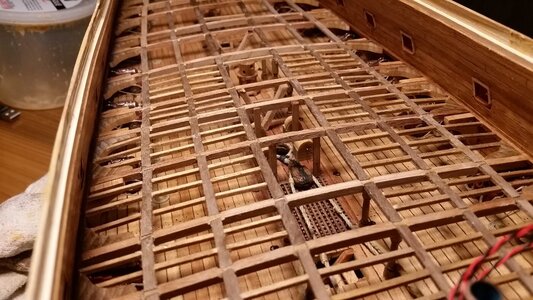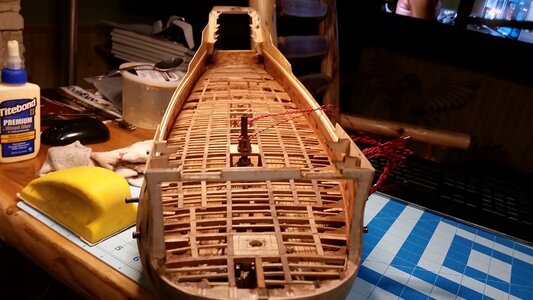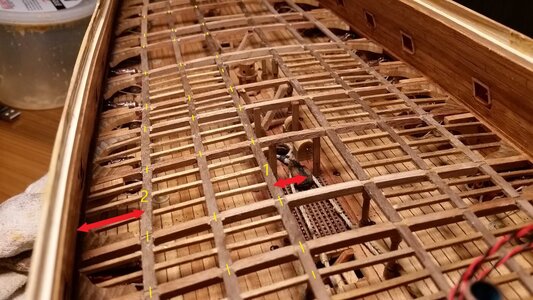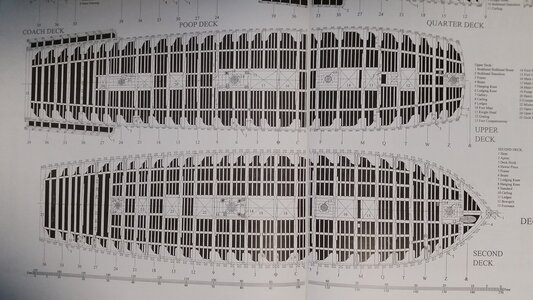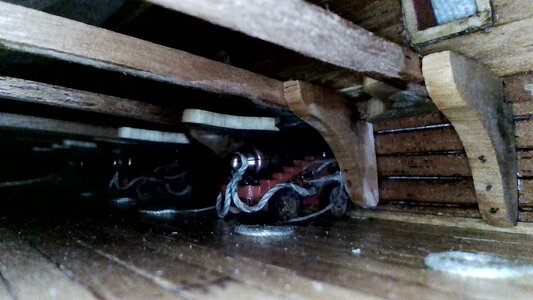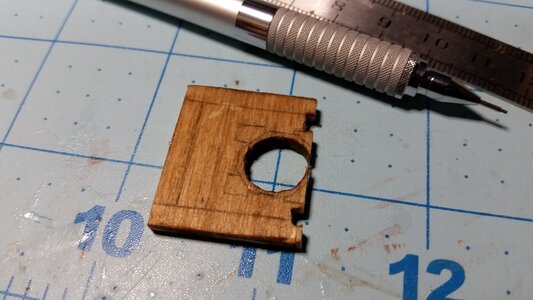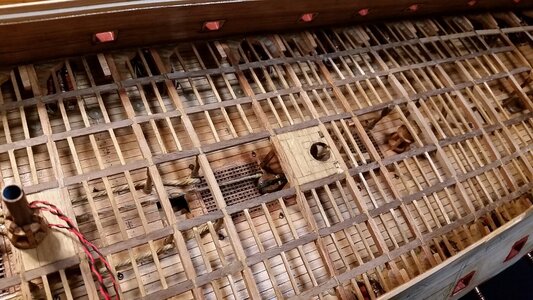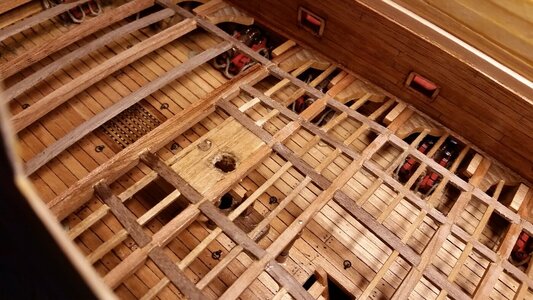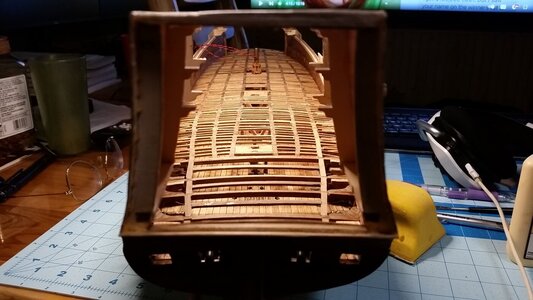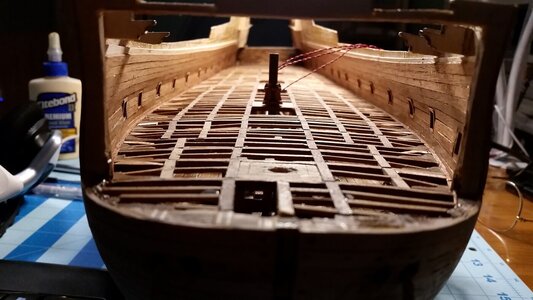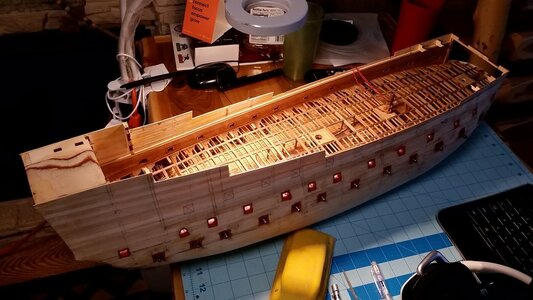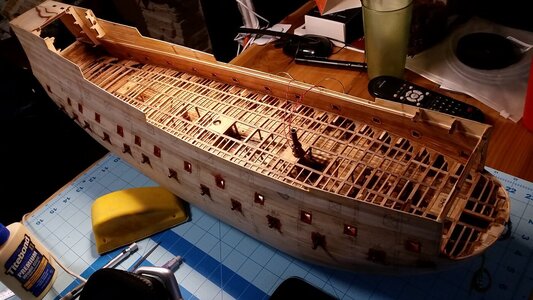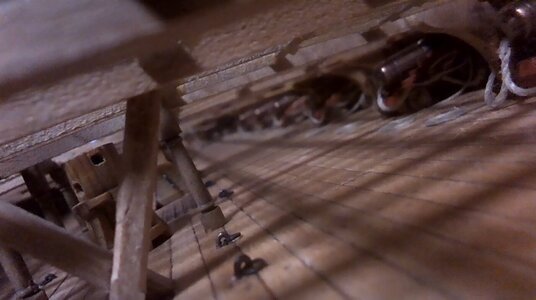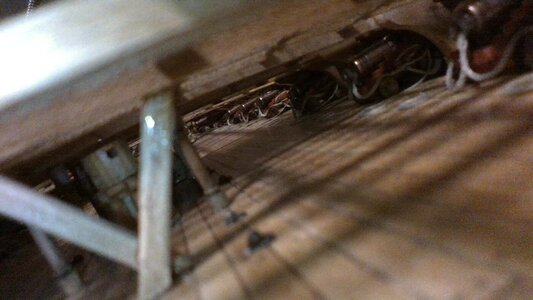The carlings for the middle gun deck were finished, and installation of ledges made from 1.5x1.5mm sticks of wood was begun at the bow.
The edges of the beams are beveled with a diamond file. I prefer diamond files to wood mill files because they are easier to clean and don't load up with wood flour nearly as much.
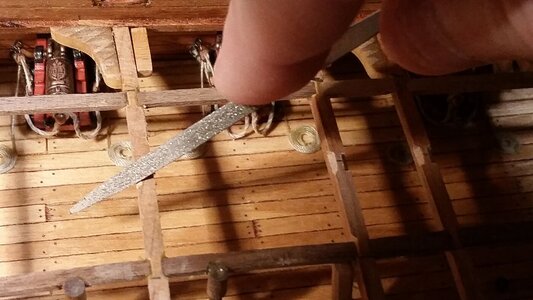
All beams prepared for carlings by beveling.
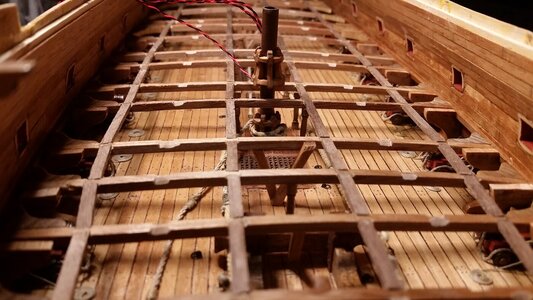
Measure and cut 1x3mm walnut pieces and bevel the ends for each carling.
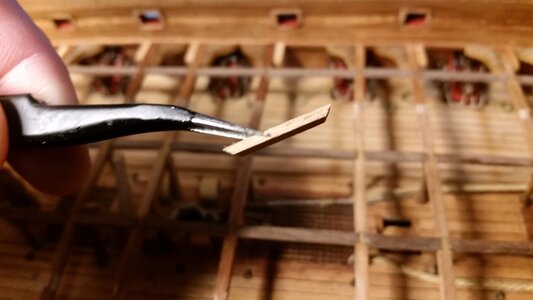
Carlings are glued in place with PVA glue. Tweezers are useful here.
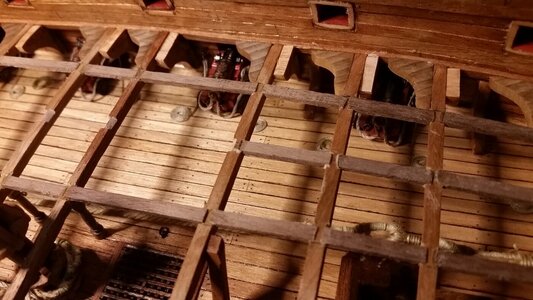
Once all carlings are done, it's time to prepare wood for making ledges, which are oriented in the transverse direction to the hull. Inexpensive 1.5x1.5mm basswood sticks are stained with dark walnut Danish Oil, cut to length and installed one at a time with PVA glue. The process goes faster than you think.
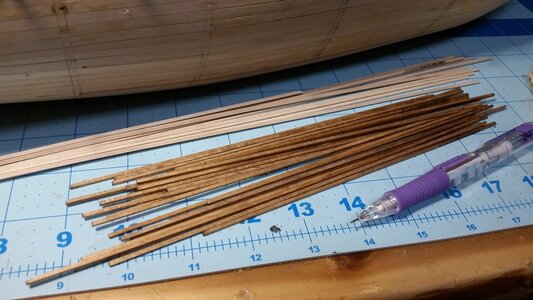
Starting at the bow, basswood sticks are glued in place, using McCay's drawing of the middle gun deck supports as a guide. Several rows were installed with more to come.
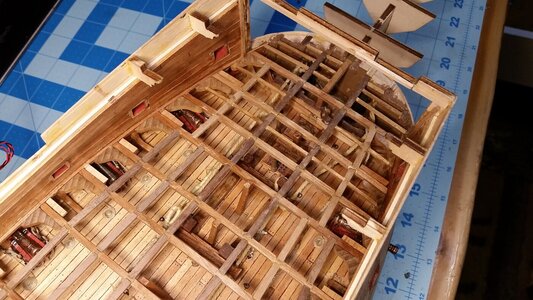
Progress so far. Some may think it's insane to cover all this work with a deck, but building all these details is a fun learning experience. It's not hard to do, since gluing little sticks together was a great pastime of mine in 3rd grade. Had lots of practice since then. . .
Had lots of practice since then. . .
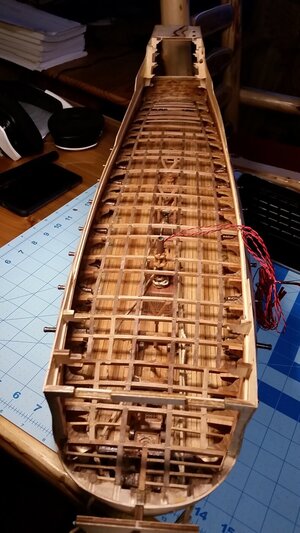
The edges of the beams are beveled with a diamond file. I prefer diamond files to wood mill files because they are easier to clean and don't load up with wood flour nearly as much.

All beams prepared for carlings by beveling.

Measure and cut 1x3mm walnut pieces and bevel the ends for each carling.

Carlings are glued in place with PVA glue. Tweezers are useful here.

Once all carlings are done, it's time to prepare wood for making ledges, which are oriented in the transverse direction to the hull. Inexpensive 1.5x1.5mm basswood sticks are stained with dark walnut Danish Oil, cut to length and installed one at a time with PVA glue. The process goes faster than you think.

Starting at the bow, basswood sticks are glued in place, using McCay's drawing of the middle gun deck supports as a guide. Several rows were installed with more to come.

Progress so far. Some may think it's insane to cover all this work with a deck, but building all these details is a fun learning experience. It's not hard to do, since gluing little sticks together was a great pastime of mine in 3rd grade.

Last edited:




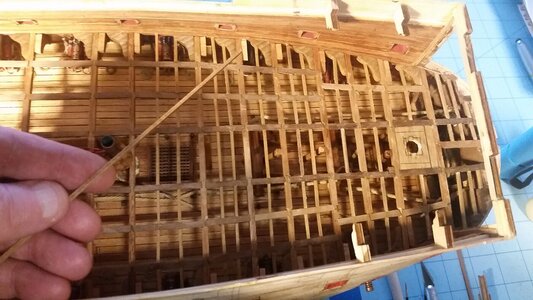
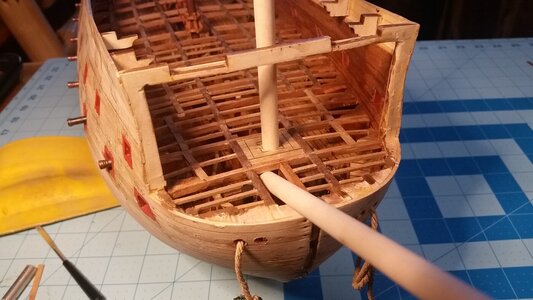
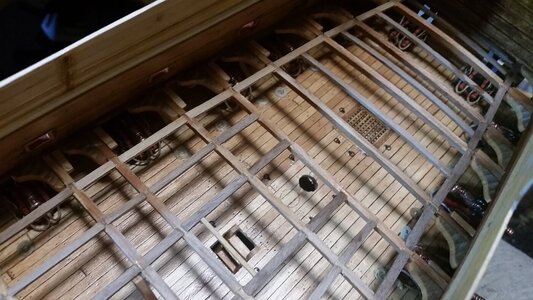
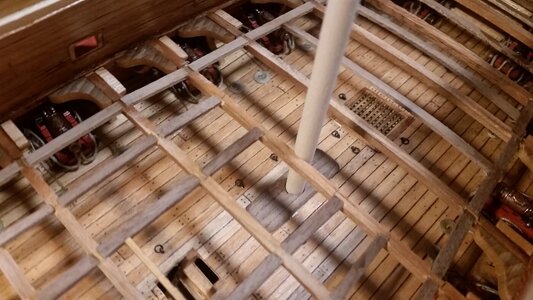
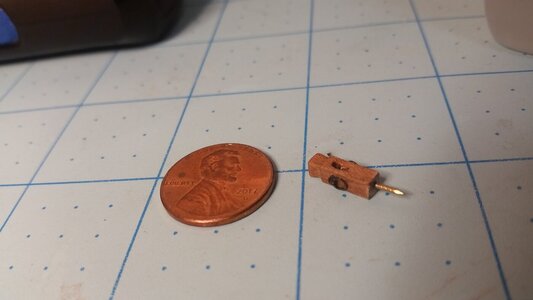
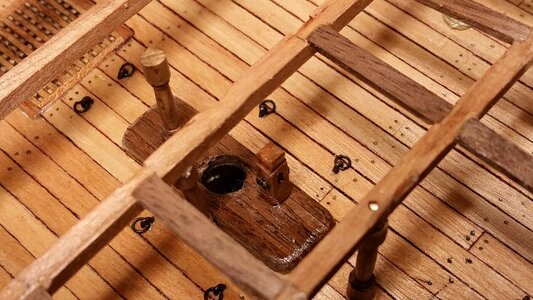
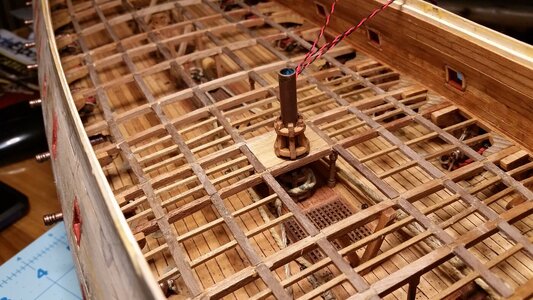
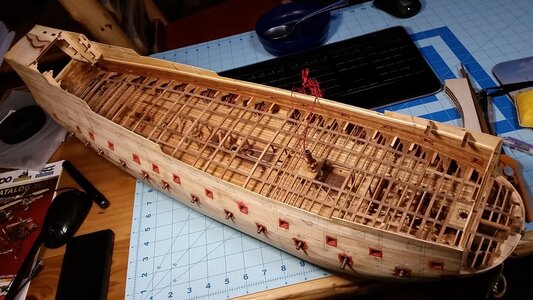
 ...
...